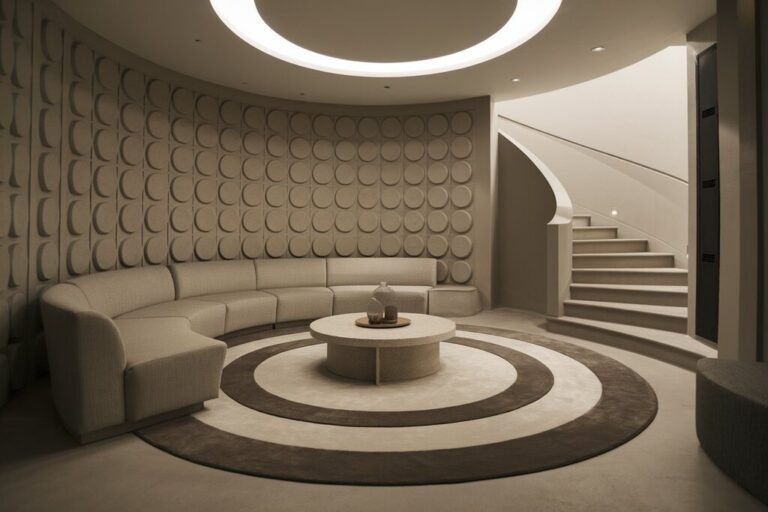In this blog, I will share how shape plays a crucial role in interior design. Shapes define the structure of a space, influence its mood, and create a sense of harmony.
Whether it’s the clean lines of geometric forms or the soft curves of organic shapes, each element contributes to the overall aesthetic.
From furniture to decor, shapes can guide the flow of a room and impact how we experience a space. By understanding the power of different shapes, you can design interiors that are not only functional but also visually appealing.
Let’s explore how you can use shapes to transform your home.
The Importance of Shape in Creating Harmony, Balance, and Visual Interest
Shapes influence how a space feels and functions. Well-planned shapes bring:
- Harmony: A consistent shape theme makes a space feel cohesive.
- Balance: A mix of angular and curved shapes prevents monotony.
- Visual interest: Unique shapes capture attention and enhance aesthetics.
For example, a living room with a round coffee table, square seating, and curved decor elements creates a sense of movement and balance. Choosing the right combination of shapes ensures a space is both appealing and functional.
Relationship Between Shape and Overall Aesthetics
Shape impacts how we perceive a room. Straight lines and geometric forms create a structured, modern feel. Soft curves and irregular shapes introduce warmth and relaxation.
A minimalist design may use sharp, clean shapes with defined edges. In contrast, a bohemian space often features organic, free-flowing forms. Your choice of shapes influences the atmosphere, so selecting them thoughtfully can define the character of your home.
The Impact of Shape on Interior Design
How Does Shape Affects Visual Perception?
Shapes guide the way you see and experience a space. Angular and geometric shapes create structure and order. Squares, rectangles, and triangles bring stability and organization.
They work well in modern and minimalist designs, where clean lines and sharp edges define the space.
Curved and organic shapes introduce softness and movement. Rounded furniture, flowing lines, and irregular forms break the rigidity of straight edges.
They create a sense of ease, making a space feel more inviting and comfortable. This is why lounges and bedrooms often feature rounded elements.
Size and proportion also shape your perception of space. Large shapes dominate a room and make a bold statement, while smaller ones add detail and depth.
The way color and texture interact with shape further enhances this effect. A dark, textured shape appears more pronounced than a smooth, light-colored one.
How Does Shape Affects Mood and Atmosphere?
Shapes influence emotions. Angular and geometric shapes add energy to a room. Sharp edges and strong lines create a sense of focus and efficiency.
Offices and workspaces often use these shapes to promote productivity and clarity. Curved and organic shapes bring relaxation. Softer forms make a space feel more natural and soothing.
A round dining table or a curved sofa encourages a more casual, welcoming atmosphere. These shapes are ideal for areas meant for rest and conversation.
Balancing different shapes helps create harmony. A room with only straight lines can feel rigid, while too many curves may lack definition.
Mixing both ensures variety without overwhelming the space. Consider pairing a rectangular bookshelf with a round mirror to achieve a balanced, visually pleasing effect.
Types of Shapes in Interior Design
Geometric Shapes
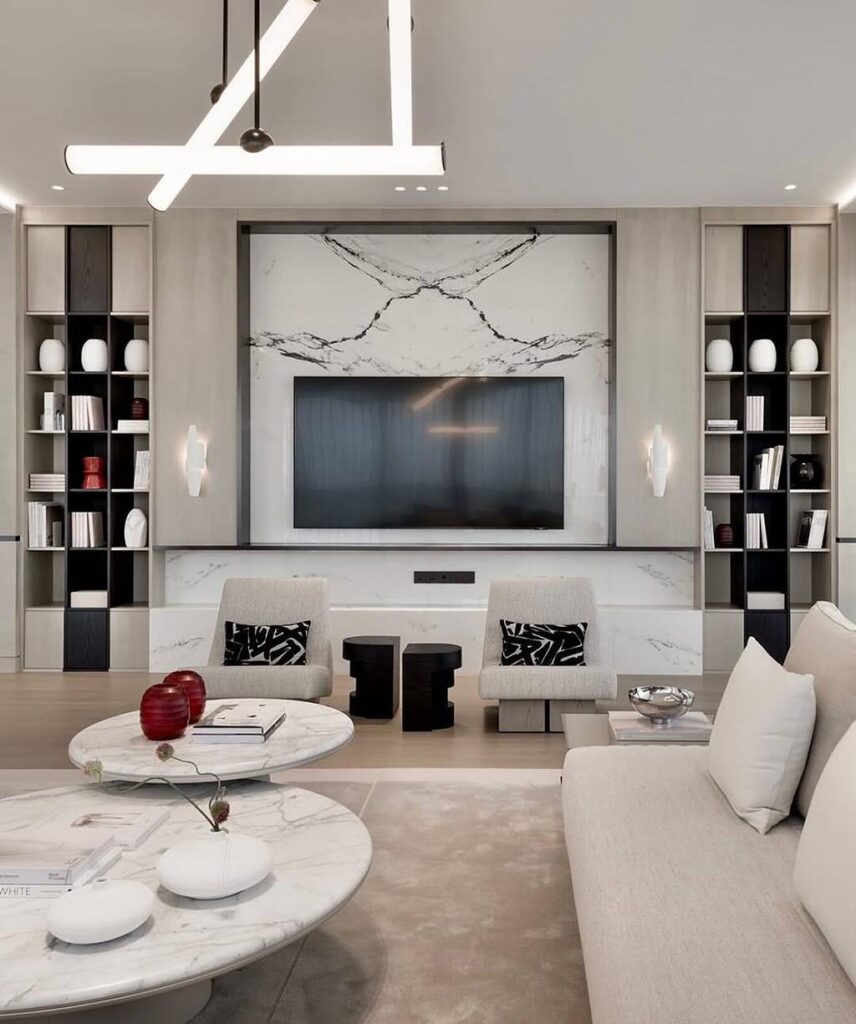
Geometric shapes have defined edges and precise forms. They include squares, triangles, circles, and rectangles. These shapes bring structure and order to a space.
Their symmetry and repetition create a sense of stability, making them a key element in modern and contemporary interiors.
You often see geometric shapes in architecture, furniture, and decor. Rectangular tables, triangular shelving units, and circular mirrors add balance to a room.
They also appear in patterns like chevron flooring, hexagonal tiles, and geometric wallpaper. These elements add depth and visual interest while maintaining a clean, organized look.
Organic Shapes
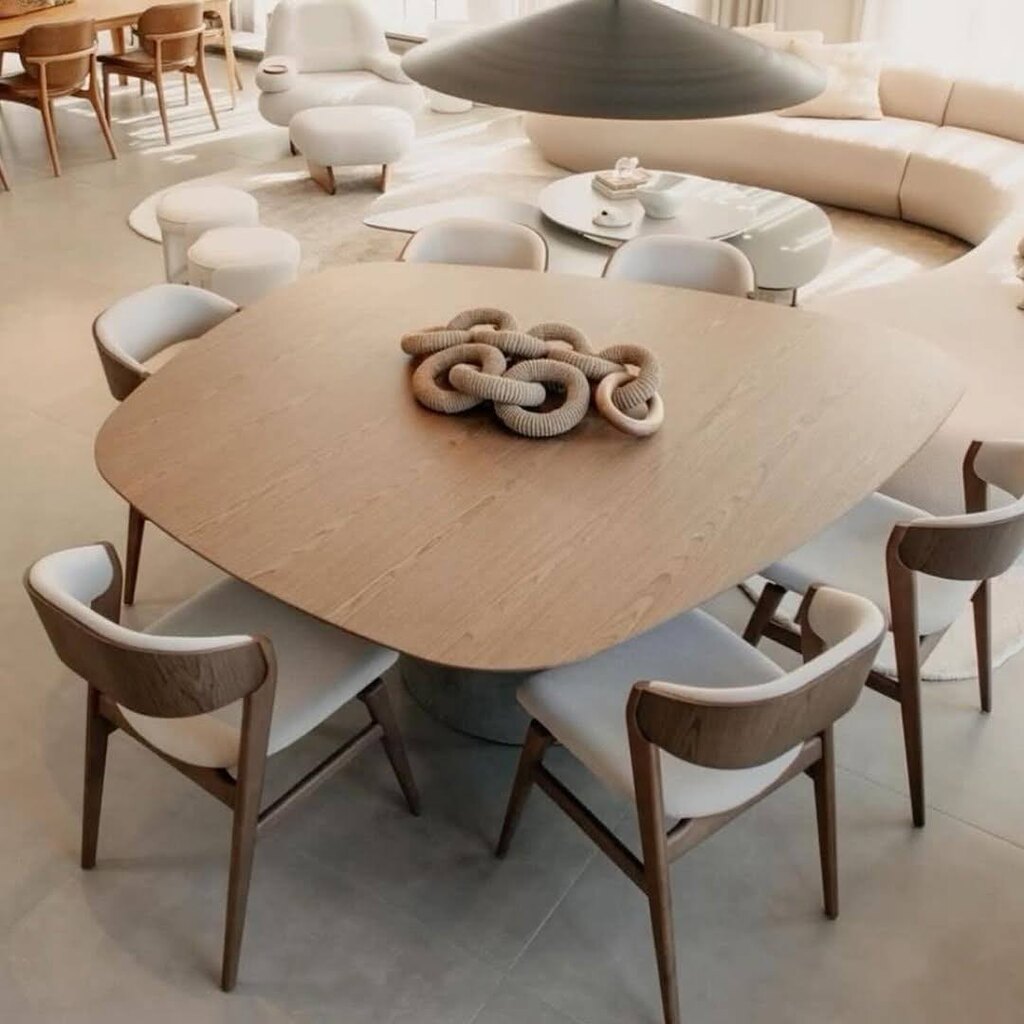
Organic shapes are fluid, irregular, and inspired by nature. Unlike geometric forms, they do not follow strict patterns. They mimic the curves of rivers, leaves, and natural landscapes.
These shapes add a sense of movement and softness, making a space feel more relaxed. You can incorporate organic shapes through curved furniture, natural wood elements, and flowing light fixtures.
A round sofa, an irregularly shaped wooden table, or a sculptural pendant light can soften a room’s overall look. These elements work well in bohemian, rustic, or Scandinavian interiors, where comfort and nature-driven aesthetics are a priority.
Abstract Shapes
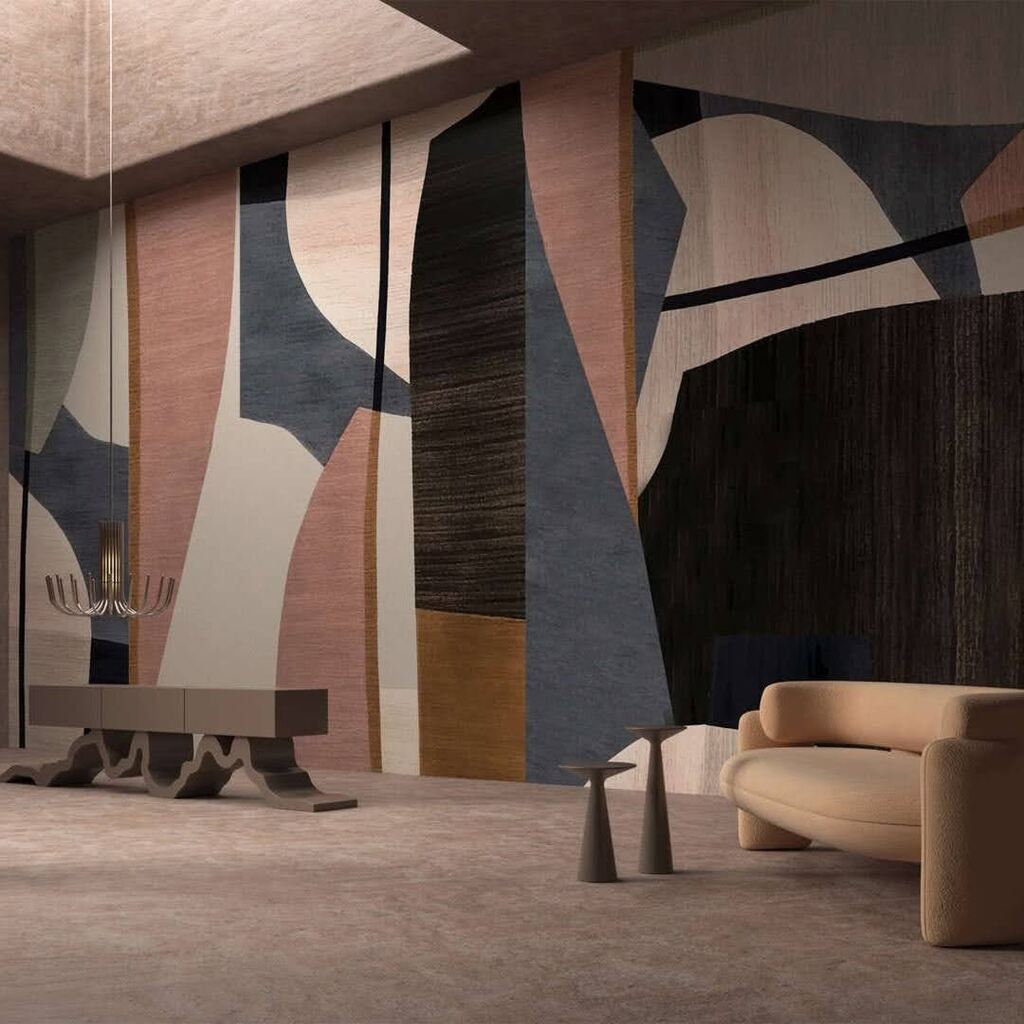
Abstract shapes do not conform to traditional geometric or organic categories. They are stylized, artistic, and unique.
These shapes create a sense of creativity and unpredictability, making a space feel dynamic and expressive. You will often find abstract shapes in modern and eclectic designs. Sculptural furniture, irregular art pieces, and unconventional decor elements add personality to a room.
An asymmetrical bookshelf, a freeform wall mirror, or a bold, abstract painting can serve as a statement piece. These shapes work best when used strategically to enhance visual interest without overwhelming the space.
How to Apply Shape in Interior Design
Using Shape to Create Focal Points
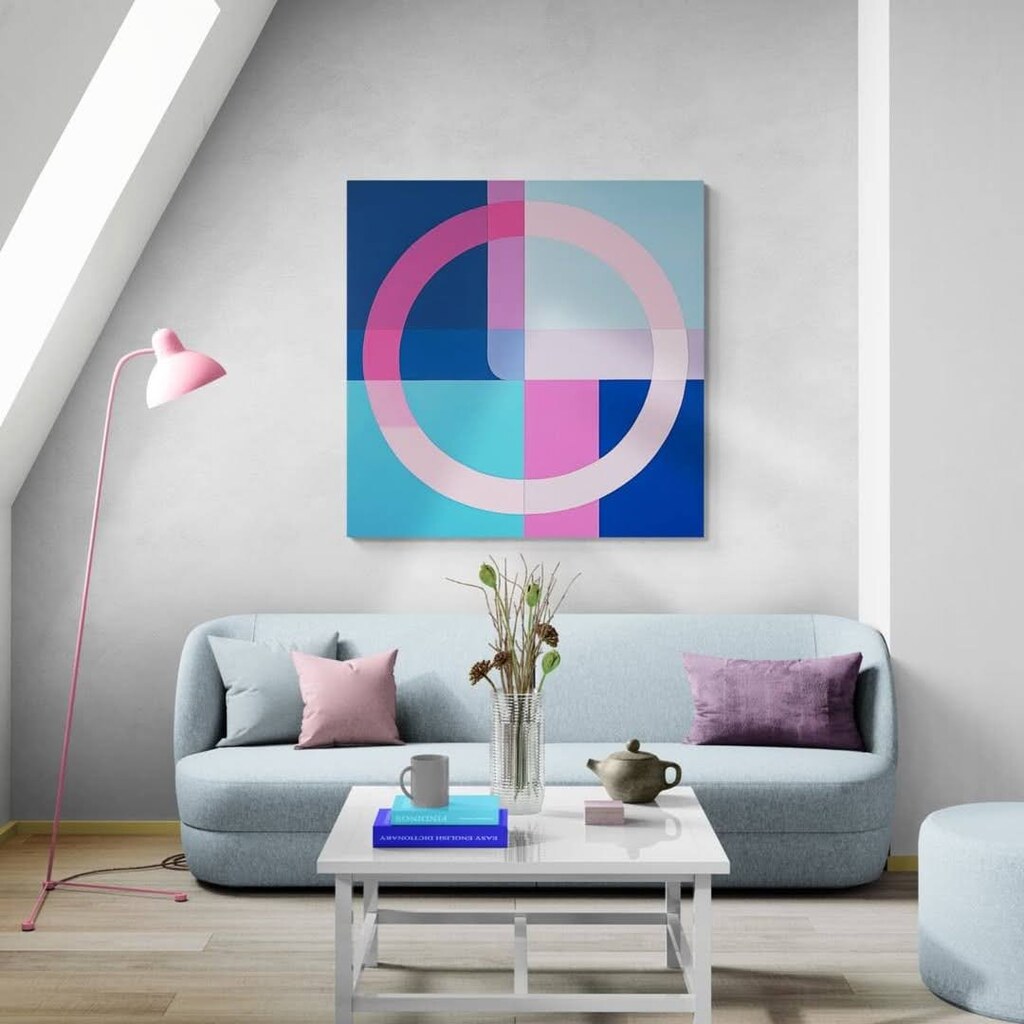
Shapes can instantly draw attention to specific areas in a room. A bold or unique shape naturally stands out, making it an effective tool for creating a focal point.
Large, eye-catching shapes can become the centerpiece of a space, guiding the viewer’s eye.
Examples of focal points using shape include:
- Statement light fixtures – A chandelier with a geometric or sculptural design makes a striking centerpiece.
- Uniquely shaped mirrors – A round or asymmetrical mirror adds character and directs attention to the wall.
- Sculptural furniture – A curved sofa or an angular coffee table acts as a conversation starter.
Strategic placement is key. If everything in a room demands attention, the space can feel cluttered.
You can choose one or two bold shapes to highlight, allowing the rest of the design to support them.
Defining Spaces Through Shape
Shapes help separate different areas within a room. In open-concept spaces, shape variations can create natural boundaries without the need for walls. This makes the space feel organized while maintaining an open feel.
Ways to define spaces with shape:
- Curved sofas – These help carve out a cozy seating zone within a larger living area.
- Rectangular rugs – They anchor furniture groupings and visually mark separate zones, such as a dining area within an open floor plan.
- Arched doorways or partitions – These provide subtle divisions while maintaining a fluid design.
When planning a space, you need to consider how different shapes can subtly guide movement and define areas without disrupting the overall flow.
Enhancing Visual Interest with Shape
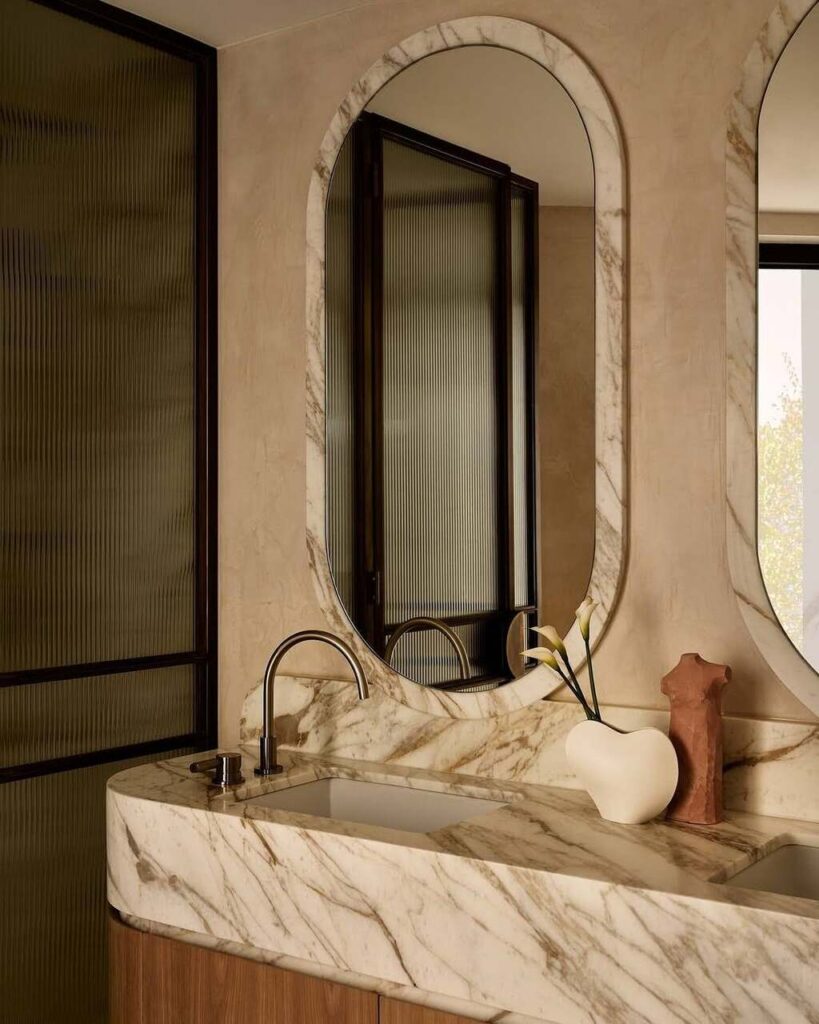
Using a mix of shapes prevents a room from feeling flat or monotonous. Layering different shapes adds dimension and depth.
Ways to enhance visual interest:
- Layering shapes – You can combine a round ottoman with a rectangular rug and a sculptural lamp to create depth.
- Mixing geometric and organic forms – Pairing a structured bookshelf with a freeform coffee table creates contrast.
- Using repetition – Repeating a shape, like circular wall art and a round pendant light, creates cohesion.
When combining different shapes, maintain a balance. Too many competing forms can create a chaotic look, while a well-curated mix enhances the room’s appeal.
Considering Symmetry and Balance in Shape Selection
Symmetry and balance affect how a room feels. A symmetrical design brings order, while asymmetry adds a dynamic, modern touch.
- Symmetry creates stability – Placing matching flanking chairs on either side of a fireplace or bed makes a space feel intentional.
- Asymmetry adds movement – A mix of different-shaped furniture pieces, like a round chair next to a rectangular sofa, keeps the space visually engaging.
If a room feels too rigid, introducing an asymmetrical arrangement can add variety. If it feels chaotic, symmetrical elements can restore balance.
Incorporating Texture and Shape Together
Texture changes how a shape is perceived. The same shape can feel entirely different depending on its surface finish.
Examples of texture and shape combinations:
- Rough organic shapes – A natural wood coffee table with irregular edges adds warmth and a raw, tactile appeal.
- Sleek geometric shapes – A glossy, metal-framed bookshelf enhances a modern, clean-lined aesthetic.
You need to combine contrasting textures with different shapes to keep a design interesting. A smooth marble table against a textured fabric sofa creates a layered, dynamic effect.
By using shapes thoughtfully, you can enhance both the aesthetics and functionality of a space.
Shape and Spatial Planning in Interior Design
The Influence of Room Shape on Design Choices
The shape of your room guides your design choices. You need to adapt furniture and decor to match the space. Consider the room’s dimensions when selecting items.
- In a square room, you may use rounded furniture to soften sharp angles.
- In a long space, curved elements can break up the monotony.
The room’s shape also dictates the arrangement and overall look. Think about how each piece fits within the room.
Ask yourself if the current layout maximizes the space. Simple adjustments can enhance both function and style.
Achieving Functional Flow Through Shape
Different shapes influence how you move through your space. Curved shapes tend to guide movement gently. They create a natural, continuous flow.
- A curved sofa or archway can direct traffic in a busy area.
- Angular shapes mark distinct zones and focus attention on specific areas.
Using curved versus angular layouts creates different atmospheres. Curved elements invite relaxation and ease. Angular layouts provide clear structure and order.
You need to consider what flow you need and adjust your shapes to create a space that works for you.
Shape in Different Interior Design Styles
Modern Style
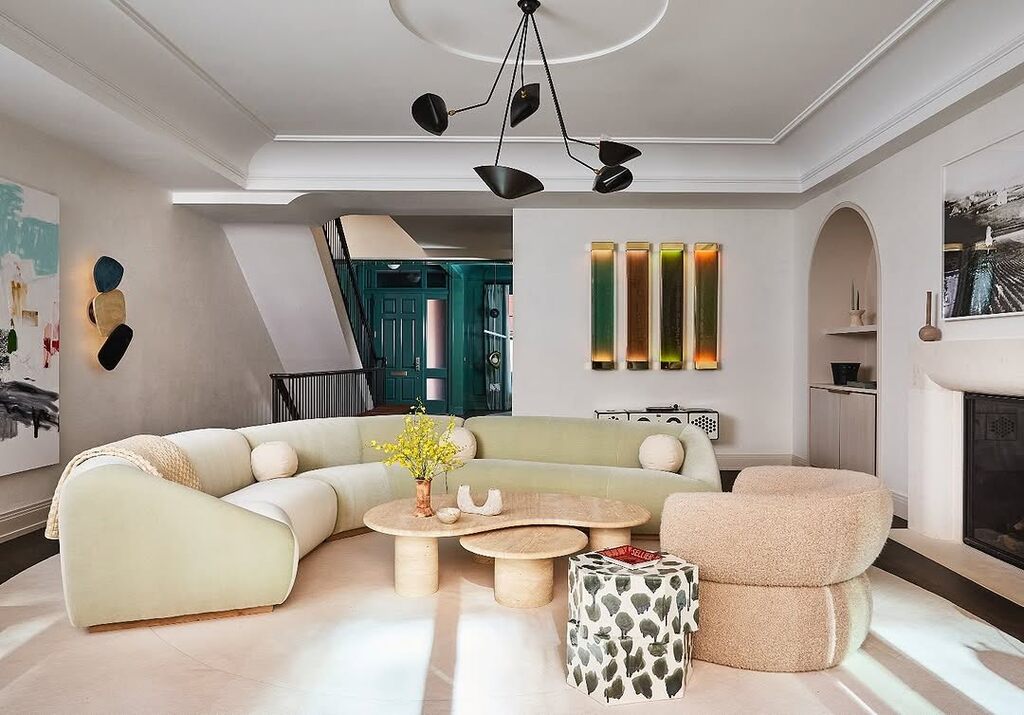
Modern design relies on clean, geometric shapes. Straight lines and sharp angles create a structured, uncluttered look. Rectangles, squares, and circles are common, often appearing in furniture, lighting, and architectural details.
Minimalism plays a key role in shape selection. Every piece serves a purpose, avoiding unnecessary decoration. A modern space may feature a rectangular sofa with a circular coffee table for contrast. Simple shapes keep the design sleek and functional.
Minimalist Style
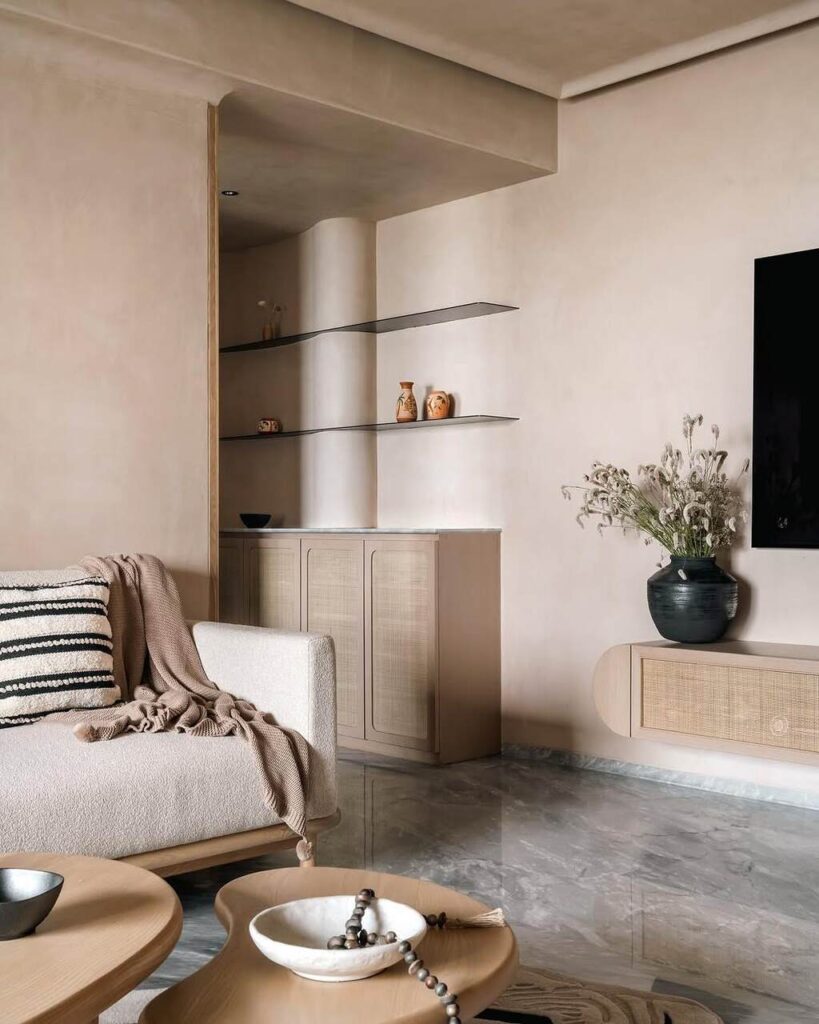
Minimalist interiors emphasize negative space and simple shapes. The goal is to create openness without excess detail. Geometric shapes maintain structure, while organic forms introduce warmth.
Curved furniture and soft edges make the space feel inviting. A minimalist room might feature a linear shelving unit paired with a gently curved chair. The combination of clean and flowing shapes keeps the space visually balanced.
Traditional Style
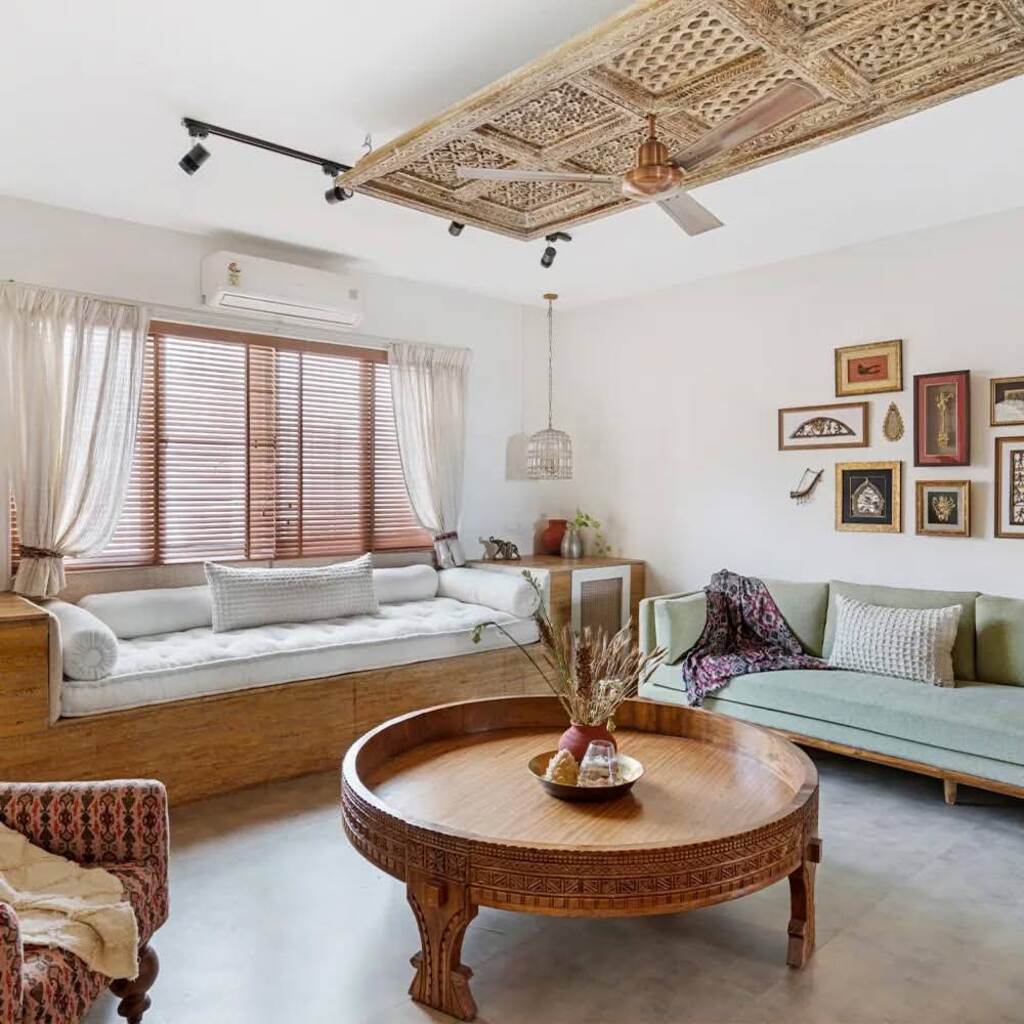
Traditional interiors favor ornate and classic shapes. Curves, arches, and intricate detailing create a timeless appeal. From crown molding to carved wooden furniture, these elements add depth and elegance.
Arched windows and decorative columns enhance architectural beauty. A traditional living room may include a curved sofa, a round coffee table, and an elaborate chandelier. The mix of refined shapes gives the space a formal yet welcoming feel.
Eclectic Style
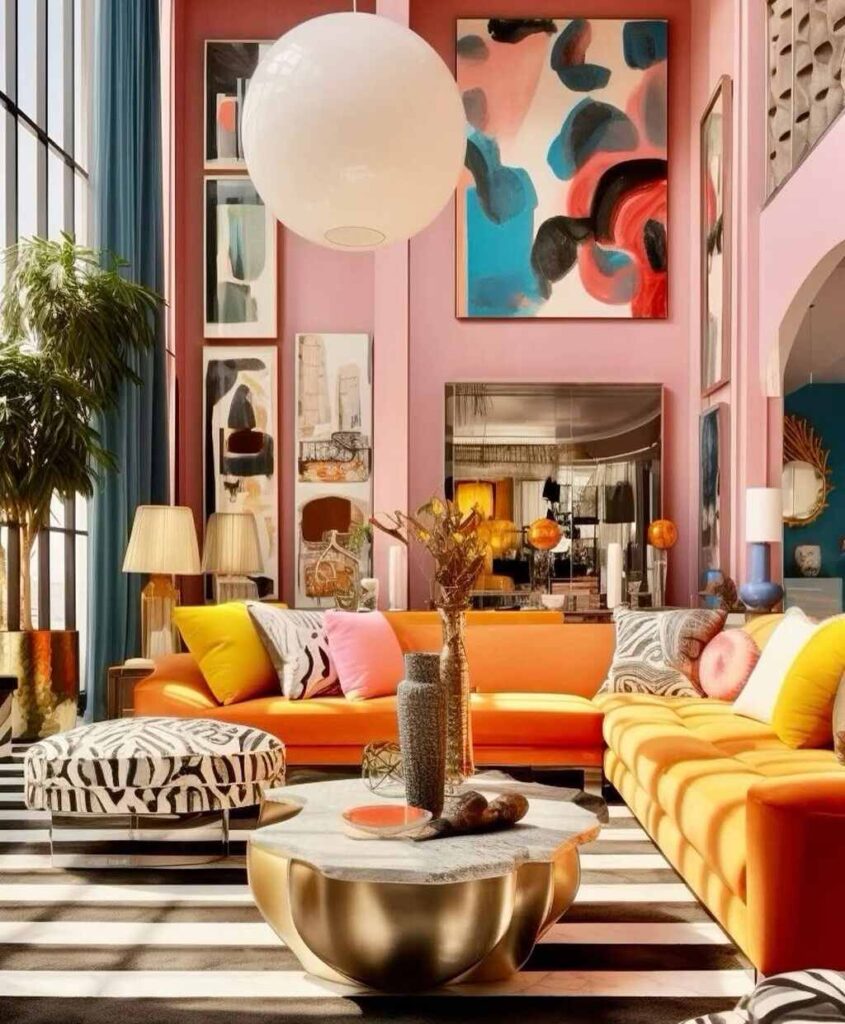
Eclectic design thrives on variety. It blends different shape types to create a dynamic and personalized space. Geometric, organic, and abstract forms all come together in unique ways.
A bold geometric accent wall might pair with a rounded armchair and sculptural lighting. The mix of sharp and soft lines keeps the room visually interesting. When using an eclectic approach, balance is key—every shape should contribute to the overall harmony of the space.
The Future of Shape in Interior Design
Emerging Trends in Shape Usage
Designers are experimenting with new shapes and materials. Advances in technology allow for more fluid and dynamic forms. This results in innovative furniture, decor, and architectural elements.
3D printing has revolutionized shape innovation. It enables the creation of complex, custom forms that were once impossible. From sculptural chairs to intricate lighting fixtures, this technology expands design possibilities. Expect more organic, nature-inspired, and asymmetrical shapes in the future.
Blending Traditional and Modern Shapes
Classic and contemporary forms are merging to create unique interiors. This approach balances timeless elegance with modern simplicity. Vintage furniture with curved edges pairs well with sleek, linear elements.
For example, a traditional arched doorway combined with minimalist furnishings creates a striking contrast. Mixing ornate moldings with geometric furniture offers a refined yet contemporary look. This fusion keeps interiors fresh while respecting historical influences.
Nature-Inspired Shape Trends
Biomorphic and organic shapes are becoming more popular. These shapes mimic nature, bringing a sense of calm and fluidity into interiors. Soft, irregular forms create a more relaxed, inviting atmosphere.
Sustainability also influences shape trends. Many designers are turning to natural materials and eco-friendly designs. Think of wooden furniture with raw, uncut edges or wave-like patterns in ceilings and walls. These elements connect interiors with the natural world.
The Rise of Minimalist and Geometric Shapes
Clean, structured spaces are gaining popularity. Geometric minimalism focuses on simple, bold shapes with no unnecessary details. This style enhances functionality while maintaining aesthetic appeal.
Straight lines, circles, and rectangles dominate modern interiors. They create order and efficiency, making spaces feel organized. In contrast, softer geometric shapes, like rounded edges on furniture, add warmth to minimalistic designs. This trend is expected to continue shaping contemporary interiors.
Common Mistakes to Avoid When Using Shape in Interior Design
Overuse of Too Many Shapes Leading to Visual Clutter
Too many competing shapes can overwhelm a space. A mix of geometric, organic, and abstract forms without structure can create chaos. When everything fights for attention, the room loses its sense of balance.
To avoid clutter, limit the number of dominant shapes. If using geometric furniture, keep decor elements within the same shape family. For contrast, introduce a few softer forms rather than layering too many different styles. A well-curated mix creates interest without overpowering the design.
Ignoring Functionality When Choosing Shape-Focused Designs
A visually appealing shape is not always practical. Furniture or decor that looks striking but lacks usability can disrupt the functionality of a room. An overly sculptured chair might be uncomfortable, or a uniquely shaped table may not provide enough surface area.
Before choosing a shape-driven design, consider how it fits into daily life. A round dining table can improve the flow, while an angular desk may better suit a focused workspace. Prioritizing both form and function ensures a space is both beautiful and efficient.
Lack of Cohesion Between Different Shape Elements
Mixing too many unrelated shapes can make a room feel disconnected. If geometric patterns, curved furniture, and abstract art compete for attention, the design lacks unity. A cohesive space requires intentional shape selection.
To create harmony, repeat key shapes throughout the space. If using circular light fixtures, consider round-backed chairs or a curved sofa. Matching dominant shapes across furniture, decor, and architectural features ties the room together.
Not Considering the Impact of Shape on Mood and Perception
Shapes influence how a room feels. Sharp angles create energy and focus, while soft curves bring relaxation. Using the wrong shapes for a space’s purpose can impact comfort and usability.
Think about the intended atmosphere. A home office benefits from structured, geometric lines for organization, while a bedroom feels more inviting with rounded edges and organic shapes. Selecting shapes that align with the room’s function enhances both mood and practicality.
Conclusion
Shape is more than just a design element; it’s a powerful tool that defines space, enhances mood, and influences movement. The right mix of geometric precision, organic flow, and abstract creativity can bring balance and character to any room.
Every shape you choose has a purpose. A curved sofa invites conversation, a bold angular light fixture creates focus, and a well-placed round mirror expands visual space. The key is to experiment with shapes intentionally, ensuring they work together rather than compete.
Think of your home as a canvas. By shaping it thoughtfully, you can turn any space into a reflection of your style and personality.
FAQ
How do shapes impact small spaces?
Shapes define how a small space feels and functions. Geometric shapes add structure, while curves improve flow. Vertical shapes create height, making a room feel larger. Too many competing shapes cause clutter, so repetition ensures cohesion. Thoughtful shape selection enhances openness and organization.
Can I use shapes in a budget-friendly way?
Yes, use shapes affordably with rugs, pillows, and DIY decor. Add geometric patterns, round mirrors, or thrifted furniture. Rearrange items to highlight shapes. Small changes create impact without high costs.
How can I create a cohesive look with different shapes?
Create a cohesive look by repeating key shapes across furniture, decor, and patterns. Balance geometric and organic forms to add contrast without clutter. Use a dominant shape—like circles in lighting and mirrors—while mixing subtle variations for depth. Stick to a consistent color palette to unify different shapes. Layer shapes thoughtfully, ensuring they complement rather than compete.
What are the best shape combinations for modern interiors?
Modern Interiors blend clean geometric shapes with subtle organic curves. Pair rectangular sofas with round coffee tables for balance. Use linear shelving with curved decor for contrast. Mix angular light fixtures with soft-edged chairs to add depth.

